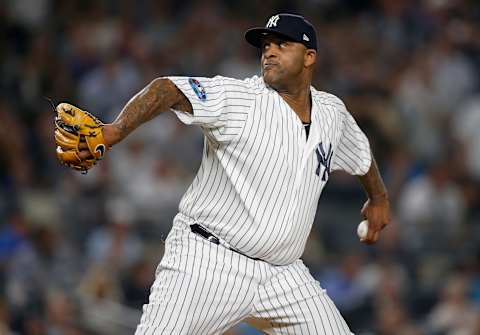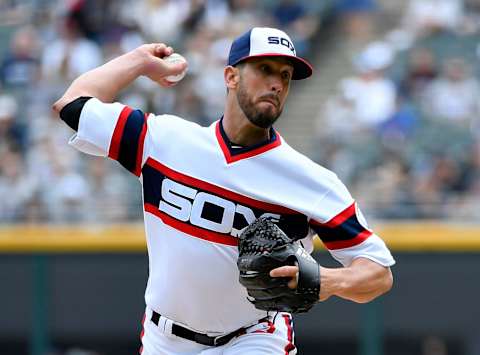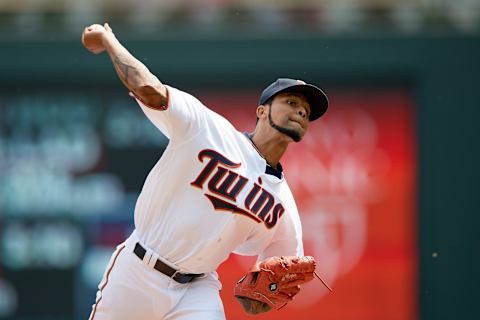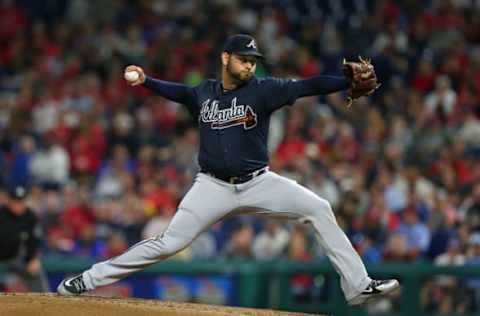5 Under the Radar MLB Free Agent Starters That Will Improve Your Team


Signing a low-cost, high-value MLB free agent starter might not be something that makes your teams’ fanbase go crazy, but it is a move that can have a major impact at a low cost.
It’s easy to ignore the more low key and frugal signings teams make during MLB free agency, especially when superstars like Manny Machado and Bryce Harper take up so much media oxygen. It makes sense that we tend to focus on these big players; they’ll have an immediate impact on their MLB free agent team and will likely stick around wherever they sign for at least the next few years.
Still, this doesn’t mean that the less exciting signings are something we should ignore. Huge contracts are only made possible by the low-cost, high-value role-players that account for a bulk of major league rosters.
This year’s free agent class has a lot of this type of value in the starting pitching department. There are a lot of veteran starters looking to sign who likely only have a few years left in the league, meaning a short-term, relatively low price deal is certainly on the table.
A move like this only makes sense for a certain type of team, one that already has one or two aces and is just looking for a guy to fill out their rotation. On these teams, a quality veteran, especially one with postseason experience, can be a big part of taking advantage of a championship window.
Two of these types of signings have already happened with C.C. Sabathia and Adam Wainwright. Sabathia is returning to the Yankees on a one year $8 million deal, and Wainwright will be returning to the Cardinals on a one year $2 million deal. Both men are taking pay cuts in 2019, and will work themselves into a rotation behind a some much younger arms.
Keep in mind that in these cases the players are returning to teams that they’ve been on for a very long time, giving them a relationship to go off of as far as contracts/pay cuts are concerned. Most veteran starters will be moving onto new organizations, giving them less leverage in negotiation. This could lead to valuable additions at a steal of a price.
With all that in mind, let’s take a look at the top 5 value free agent starters on the market right now.

5. James Shields
Throughout his career James Shields has been, if nothing else, an innings eater. Last year in his age 36 season Shields threw 204.2 innings, going deep into some very rough games for the 62-100 Chicago White Sox, and he’s thrown 200+ innings pretty consistently throughout his career.
With that said, Shields 2018 stats are not great by any means; he finished the year with a 4.53 ERA and 1.309 WHIP, which are below league average but just high enough to keep him above replacement level.
By themselves, these numbers don’t make much of a case for Shields but looked at in relation to his last few seasons there’s a little bit of upside. This was his lowest ERA since his initial fall from high performance in 2016, and his FIP and walks per 9 innings also improved.
This is likely a result in Shields changing up his pitching style to better suit his aging skillset. The biggest move Shields has made over the past few years is the addition of a slow curveball which clocks in around 69 MPH, compared to the 78 MPH velocity on his normal curve. This pitch also produces a 23% whiff percentage, the highest of any of Shields pitches.
If Shields continues to work this pitch into his repertoire in 2019 he could see even more improvement in his performance. Shields’ four-seam only averages a velocity of around 90 MPH, so slowing down his offspeed stuff to increase speed differential is his best bet to stay afloat. All signs indicate he’ll be able to do this, making him an intriguing option for a fourth or fifth spot in a starting rotation.
His performance last year also won’t warrant a big paycheck, so the fact that he’d only be a drip in a team’s payroll bucket makes him worth the risk.

4. Ervin Santana
Signing Ervin Santana next year would be a risk, but it’s also a move with major potential upside. Santana’s season was derailed before it even started last year when a February finger surgery kept him out for a bulk of the season. This was a major blow to Santana, who MLB.com writer Rhett Bolinger reported would be the Twin’s opening day starter.
When Santana finally returned to the rotation in late July his performance was less than impressive, finishing with an 8.03 ERA over 24.2 innings pitched; he only started five times before a return to the DL due to further finger complications.
So, 2018 was bad. Fortunately for Santana his 2017 was likely stellar enough to keep teams interested, and if he is able to rehab properly this offseason and return to near that level he could be the steal of this free agent class.
Santana was an All-Star in 2017 and received a few votes for the AL Cy Young Award. He was the Twins ace, finishing with a 3.28 ERA and 167 strikeouts over 211.1 innings. That 211.1 innings was second among AL starters behind the Chris Sale, which is very impressive for a player in their age 34 season.
Much of Santana’s success in the past has come courtesy of his slider, which is pretty much tied with his four-seam fastball as his most used pitch. In 2017 opposing hitters slugged .260 against Santana’s slider, compared to .480 against his four-seam and changeup and .505 against his sinker.
An injured middle finger isn’t good news for a slider-heavy pitcher like Santana, which is likely to give a lot of front offices pause when considering Santana as an option. One silver lining to all of this is that if Santana is able to fully rehab this winter it’s possible that his fully healed finger will produce a better slider than we saw in 2017, according to reporting by Mike Berardino of the Pioneer Press.
Basically, the proof will be in the pudding for Sanchez. He’ll likely be signed later in the offseason when the results of his recovery will be more clear and teams will get a chance to look at his medicals. With his recent success and possible upside Sanchez could be an under the radar steal for whatever team is willing to take the risk.

3. Clay Buchholz
Clay Buchholz quietly had a very nice season last year for the Arizona Diamondbacks, joining the team in May after a stint in the minors and finishing the year with a 2.01 ERA. He even went pretty deep in most of his starts, averaging 6.1 innings a start with a highlight of 7.1 innings a start in August.
These numbers are great, and by metrics alone, Buchholz is probably the best starter on this list. Unfortunately, these numbers are overshadowed by his injury history; it will take a lot for teams around the league to stop viewing Buchholz as a player with durability issues. In 12 major league seasons, Buchholz has never been able to reach 30 starts, and he’s often on the disabled list.
It does not help Buchholz’s case that he ended last year on the DL, though he told MLB.com’s Alyson Footer that he is optimistic about his return next year. A big thing that Buchholz has going for him is how tenacious he’s been through these injuries, particularly last season. Many people had written off or forgotten about him going into 2018, and he had to prove himself in AA and AAA before the Diamondbacks were willing to give him a call-up.
If Buchholz was willing to prove himself in the minors last year it’s likely that he’d be willing to do the same this year, especially if it seemed like the team that signs him is serious about bringing him back up to the majors if he performs well. Front offices that pursue this path could find themselves with a sub 3.00 ERA starter for the cost of a minor leaguer, something that could be hard to pass up for a team with a thin rotation.

2. Matt Harvey
Matt Harvey’s exit from the Mets was extremely ugly, and many thought that his career was pretty much done after a rocky start to 2018 and his refusal to be demoted to AAA. Somehow, he was able to bounce back from all of this and have a pretty OK season for the Cincinnati Reds, going 7-7 in 24 starts with a 4.50 ERA.
Though the Dark Knight days of Harvey consistently throwing a 98+ fastball are probably over he still has a decent set of tools in his repertoire; his fastball averages a respectable 94.61 MPH on the gun, and he’s been gradually increasing the use of his slider, which is his pitch with the lowest batting average against.
Another thing that Harvey has going for him especially compared others on this list, is that he will only be 30 next season. His injury history up to this point is troubling, but he’s still young enough where it’s possible he could put it all behind him with proper treatment and retooling.
To prove to a team that he can be durable Harvey will probably have to take a reasonable short-term contract. If a team can work this out it would be extremely beneficial; Harvey is at this time pretty ready to be plugged into a fourth rotation spot, and he’d have a huge incentive to again prove himself as a pitcher deserving of a bigger contract.

1. Anibal Sanchez
After spending a few years in a combination bullpen/starting role with the Detroit Tigers veteran pitcher Anibal Sanchez returned to starting full time last year with the Atlanta Braves, where he logged 136.2 innings over 24 starts with a 2.83 ERA.
Next season will be Sanchez’s 14th in the majors, and his style of pitching, which relies more on change of speed and control than power, usually ages well. He’s an extremely savvy pitcher who is willing to adapt and change, which served him well last year. In 2018 he started throwing his cutter a ton, increasing his usage of the pitch to 23.40% compared to 8.41% a year prior. It was a successful move, and opposing batters had an average of .195 against the pitch.
More from Call to the Pen
- Philadelphia Phillies, ready for a stretch run, bomb St. Louis Cardinals
- Philadelphia Phillies: The 4 players on the franchise’s Mount Rushmore
- Boston Red Sox fans should be upset over Mookie Betts’ comment
- Analyzing the Boston Red Sox trade for Dave Henderson and Spike Owen
- 2023 MLB postseason likely to have a strange look without Yankees, Red Sox, Cardinals
Sanchez’s most impressive numbers come from Statcast. Because he keeps batters on their toes with his pitch usage the average exit velocity against for balls put into play by batters facing Sanchez is 83.7 MPH, tied for first in all of baseball with Brent Suter of the Milwaukee Brewers.
Sanchez has had some durability issues throughout his career, but nothing to the level of players like Buchholz. These concerns will probably have an effect on how much money he’ll be able to ask for, but he’s far from a super high-risk acquisition if you’re thinking in the short term.
Signing Sanchez would be far from flashy, but it would be a pretty safe bet that would strengthen almost any rotation for a relatively low price. His style is one that shouldn’t be too adversely affected by age, and as he works his cutter into his repertoire more it wouldn’t be surprising to see even more success in 2019.
Next. Best FA by position at winter meetings. dark
Those are five veteran MLB free agent starters that could help a team for very little cost. What would you think about your favorite team signing any of these pitchers?